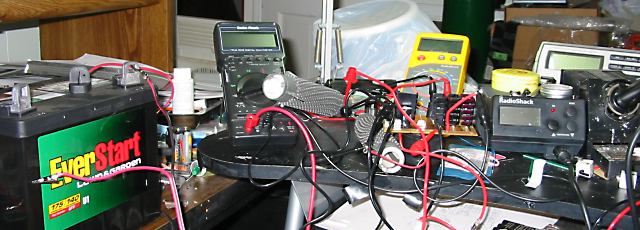My boost converter has been on the back burner for a while while I worked on the alternator and blades... recent posts got me concerned about efficiency so I thought I should put some current through it and see what I got.

Well, it's kind of hard to see the circuit board in the pic, it's right in front of the yellow DVM. (There's a closeup in the parent of this post.) I changed-out the inductor from my home wound 120uH coil to a 960uH coil I found surplus; I wanted a higher value because I'll be testing the MPPT code by using my 12v solar cells to charge a 24 volt battery and the higher inductor value is a better match to the lower power produced by the solar cells. That said, the 960uH coil is rated for 7 amps so I figured it could stand up to some power too...
I used a 50% duty cycle with no feedback so the output was unregulated; the boost was still 2x but the input voltage on my little batteries sagged with load.
The first three tests were with a 9.6 volt nicad battery pack, the last two with with a 12v lawnmower battery. Various power resistors were used for the load.
- ohms, 3.75 watts in, 3.53 watts out, 94%
- ohms, 7.05 watts in, 6.62 watts out, 94%
- ohms, 15.4 watts in, 13.94 watts out, 91%
- 9 ohms, 35.5 watts in, 31.4 watts out, 88.4%
- 2 ohms, 63.3 watts in, 54.2 watts out, 85.6 %
Well, it does seem that efficiency is going down as power goes up. One thing I noticed is that output volts were about 2x input volts at lower power, that ratio dropped to about 1.73x at 55 watts. I'm not sure whether I'm not getting the 2x boost because of the circuit itself or whether some unwanted resistance or voltage drops in the wiring... I'll look into that.
- Ed.